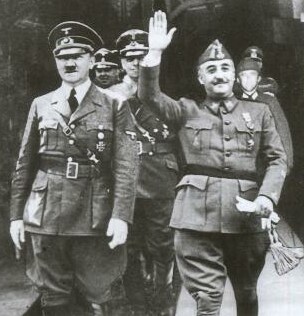The gay marriage movement may seem like a modern development but it had its roots in World War II culture. By having homosexual characters in comedies, the concept was less threatening and still passed the censorship of film boards.
An article in the journal Zer by
Carlos III University of Madrid professor in journalism Alejandro Melero studied the presence and visibility of the gay world in Spanish cinema between 1940 and 1975 - the era of fascist dictator Ferdinand Franco. It shows that there were genres that homosexuality appeared in more frequently. One such genre is comedy, in which it was common to portray gays as funny characters.
In America, directors like Alfred Hitchcock were forerunners in the representation of homosexuality, "suggesting the existence of this reality without making it evident," as in the case of the film Rope, from 1948. According to Professor Melero, during the transition to democracy in Spain, the claims of the gay world were "legalized" for the first time and there was a normalization of a cultural tradition of paradigms and archetypes of characters passed from one generation to the next.

Credit: HuelvaYork.com
"What we can now label as 'gay cinema' or 'homosexual character' was not designated that way in the Franco era. Characters that at present we could call 'gays' would not have been recognized as such by audiences from the period," says Melero. For example, in Los ojos dejan huellas (1952), by José Luis Sáenz de Heredia, there are no homosexuals, only confusion that might suggest their homosexuality.
Strategies against Censorship
Though Franco was a fascist, he was a little different from Mussolini and much different from Hitler. Like Hitler, Franco had Republicans executed, but unlike Hitler, Franco defended religion and kept Spain's borders open for Jewish refugees. Like many politicians, he wanted his personality morality to dictate policy, so to avoid censorship while still being creative, artists had strategies for overcoming censorship: when it came to gays, implicit condemnation and the character as a subject of ridicule were the strategies used and that passed through the filter established by the Office of Film Censorship.
The article highlights the use of limits between the denotation and the connotation of homosexuality. As Melero explains: "One appeals to the personal connotation that each of us can make, defending the character or the scene by a denotation that is not related to homosexuality."
One director who used homosexuality as an instrument of humor was Mariano Ozores. In films like Operación cabaretera (1967), according to Melero, "Mariano Ozores's comic actors engage in outrageous behavior with ease and have license to break all the taboos, including homosexuality."





Comments